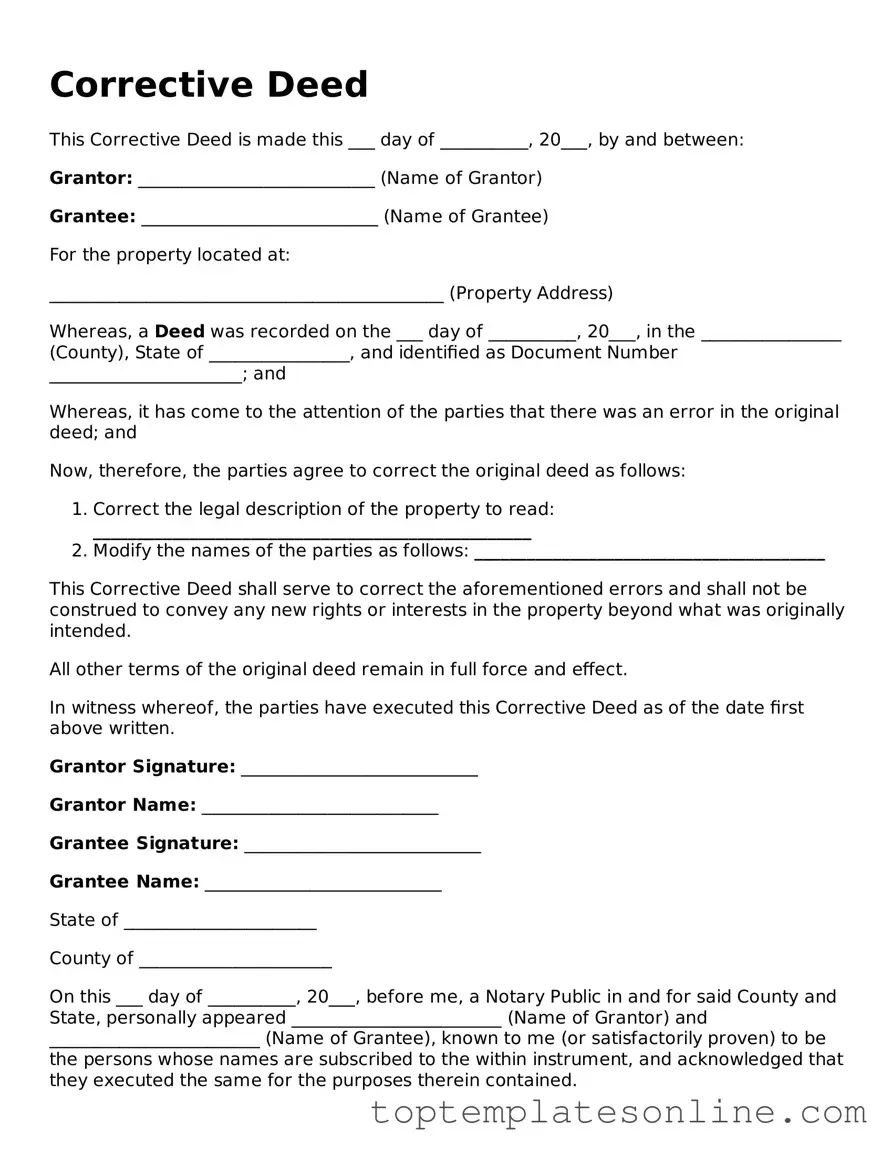When it comes to real estate transactions, accuracy in property documentation is crucial. One important tool that helps rectify errors in property deeds is the Corrective Deed form. This form serves as a legal instrument to amend mistakes that may have occurred in the original deed, ensuring that the property records reflect the true ownership and details of the property. Common reasons for using a Corrective Deed include typographical errors, incorrect property descriptions, or misidentified owners. By utilizing this form, property owners can clarify any discrepancies, thereby protecting their rights and interests. Additionally, the Corrective Deed must be executed properly, following specific state guidelines, to ensure its validity. Understanding the nuances of this form can help individuals navigate the complexities of property law and maintain accurate public records.
